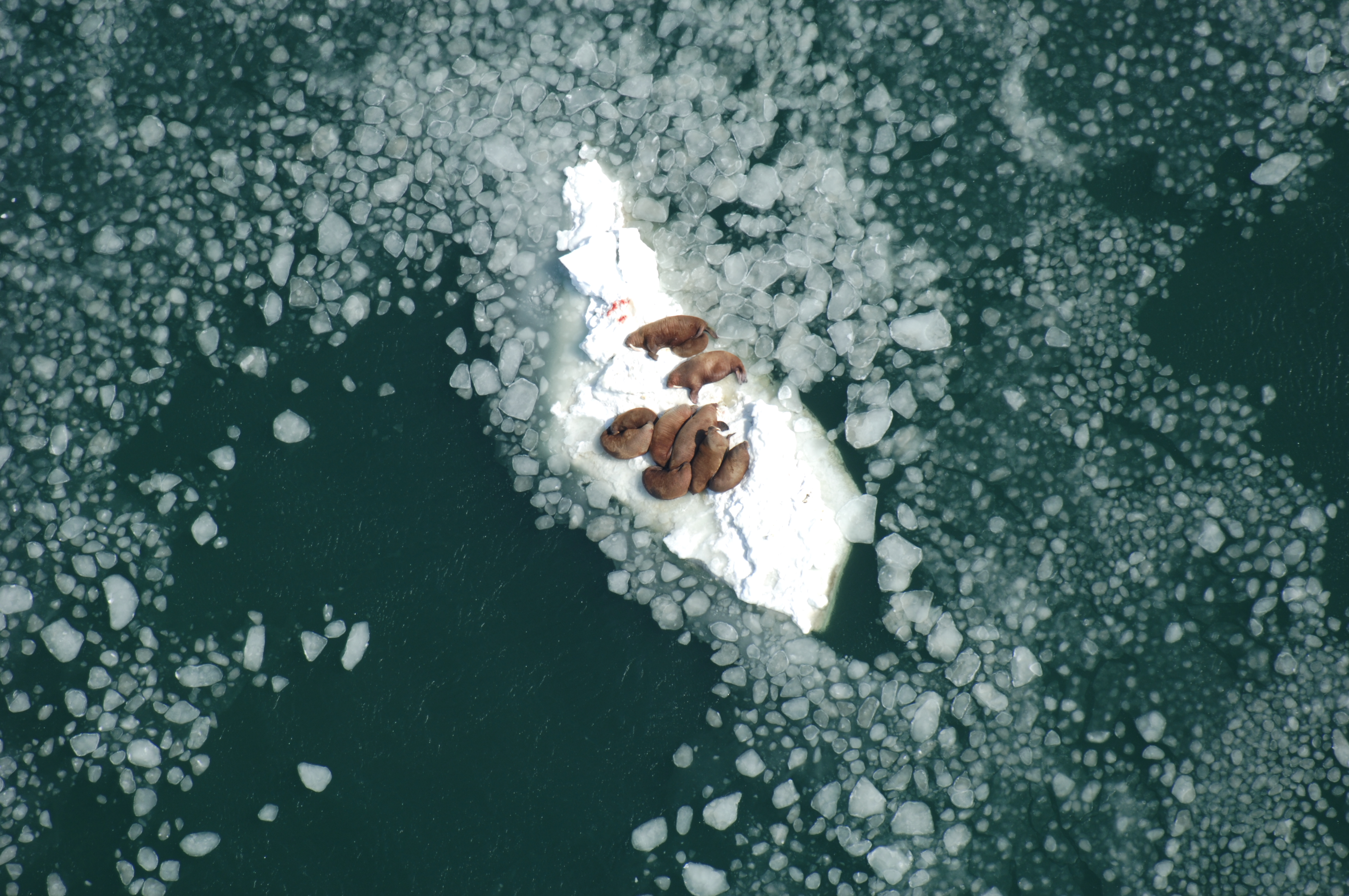Pacific walrus protections are poised to get a fresh look
A recent court ruling that the Trump administration improperly denied walrus protections, means their endangered status will be revisited.

The loss of Arctic sea ice prompted Endangered Species Act protections for three species of marine mammals in Alaska — polar bears, ringed seals and spotted seals — and now Pacific walruses may join the group.
A federal appeals court ruling last week said the U.S. Fish and Wildlife Service during the Trump administration erred it in the way it excluded walruses from a threatened listing.
The service failed to sufficiently explain why in 2017 it deemed walruses as not deserving Endangered Species Act, a reversal of the agency’s well-researched conclusion issued six years earlier, the court ruling said. The court sent the case back to the lower court, with instructions for the Fish and Wildlife Service to better explain its determination.
It is unclear how the Fish and Wildlife Service will respond. The service had no comment on the 9th circuit ruling, said spokeswoman Andrea Medeiros said last week.
[US appeals court rules Trump policy improperly denied protection to walruses]
“Arctic ice is disappearing at a record rate, and walruses are suffering catastrophic habitat loss,” Emily Jeffers, an attorney with the Center for Biological Diversity, said in a statement. “This decision means that the Fish and Wildlife Service will have to go back and examine the science on sea-ice loss and walrus survival, and we’re confident they’ll give these creatures the protections they desperately need.”
But the mayor of the North Slope Borough, the northernmost Alaska regional government, opposes listing for the Pacific walrus and said that he hopes the Fish and Wildlife Service will reassert its 2017 position with the more complete justification that the court is demanding.
“Animals and the humans that call the Arctic home, we are all trying to adjust to today’s changing world,” North Slope Borough Mayor Harry Brower said in a statement.
“Our North Slope Borough Wildlife Department Scientists have been studying the walrus now for many years and while sea ice is declining, the status assessment for walrus rightly reviewed new information, including both science and Traditional Knowledge, that demonstrated walrus are more resilient and adaptive to sea ice loss than previously assumed, just like our local subsistence hunters,” Brower said.
For Pacific walruses, as with polar bears and ringed and bearded seals, government actions concerning Endangered Species Act listing have involved litigation and some back-and-forth decisions.
The initial petition seeking listing for walruses was filed by the Center for Biological Diversity in 2008 — just a few months before the Bush administration made polar bears the first animal species granted Endangered Species Act protections because of diminishing sea ice.
The petition was followed by a lawsuit, a settlement and a 2011 Obama administration determination that Endangered Species Act listing for the Pacific walrus was “warranted but precluded” — meaning it was put into a queue of qualified candidate species for which listing would be delayed.
In its 2017 reversal, the Fish and Wildlife Service said that while loss of sea ice is the main threat to the walruses, the animals have adapted by coming to shore. The population is not in imminent danger of extinction, the service said at the time. The Center for Biological Diversity subsequently sued over that 2017 decision, the legal action that ultimately produced last week’s 9th Circuit Court of Appeals ruling.
Along with the North Slope Borough, the oil industry in Alaska has opposed the walrus listing, arguing that it would impose unnecessary regulations for an animal population already adequately safeguarded by the Marine Mammal Protection Act. The Alaska Oil and Gas Association and American Petroleum Institute submitted an amicus brief supporting the 2017 Trump-era decision.
Pacific walruses that use the Chukchi Sea in summer — primarily adult females and their calves — are concentrated in the same general area where Royal Dutch Shell was exploring for oil several years ago. Shell exploration had the potential to interfere with walrus use of a site known as Hanna Shoal, a shallow “biological oasis” area within the Chukchi that is the preferred food-foraging site for walruses. Shell abandoned its exploration program in 2015 and has relinquished all its Chukchi leases.
The loss of sea ice that has pushed walrus into crowds onshore, meanwhile, creates long distances that the animals must swim to find their food at Hanna Shoal.
And there is new research indicating that the ice that Pacific walruses use is in worse condition than previously understood.
A study published on June 4 in The Cryosphere estimates that ice in the Arctic Ocean’s marginal seas thinned over the 2002-to-2018 period up to twice as fast as what was previously calculated. That thinning has been particularly fast in the Chukchi, according to the study, which factors in the change in snow cover over sea ice.
Although the future for walrus listing is unknown, the Biden administration is taking general steps to reverse Trump administration policies that curbed protections for endangered species.
The administration announced on June 4 that is it rescinding Trump-era rules that narrowed definitions of critical habitat and required economic analysis of species protection and otherwise weakened actions taken under the Endangered Species Act.
Nonetheless, the Biden administration is proposing to extend the oil industry’s ability to accidentally disturb polar bears and marine mammals during North Slope and Beaufort Sea operations.
The Fish and Wildlife Service has proposed an “incidental take” authorization that would grant a five-year renewal to existing authorizations. Under the proposed rule, companies may accidentally harass polar bears and walruses but not kill them. Industry activities are expected to “impact no more than small numbers of animals, will have a negligible impact on these species or stocks, and will not have an unmitigable adverse impact on the availability of these species or stocks for taking for subsistence uses by Alaska Natives,” said the notice, filed May 28.